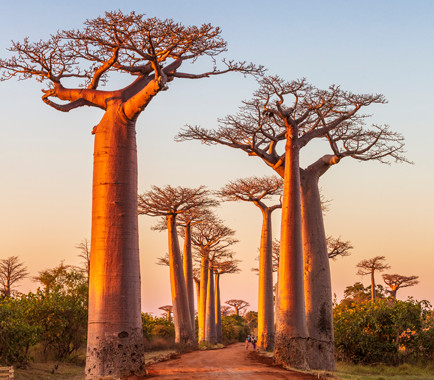
Category
inspiring ideas
inspiring ideas
This month, we continue to chase the tree on every continent with the trees endemic to Africa, i.e., African Blackwood, Giraffe Thorn, Leadwood, and Baobab.
African Blackwood Shaping the Music
The tree with its Latin name of Dalbergia Melanoxylon is known as African Blackwood. A tree endemic to the African continent, African Blackwood is a tree species that can reach a height of 4 – 15 meters. The tree has white flowers and also a fruit containing one to two seeds.
African Blackwood tree is used to produce traditional musical instruments, especially in Africa where it naturally grows. Used in the production of musical instruments such as clarinet, oboe and flute, the tree is also known by the names Babanus and Grenadilla.
Giraffe Thorn for Giraffes
The Giraffe Thorn tree is a species belonging to the tree family Fabaceae and its Latin name is Acacia Erioloba. A tree endemic to the South African region, Giraffe Thorn is found in the countries such as South Africa, Botswana, Zimbabwe, Namibia, Angola, Mozambique, Zambia, and Swaziland.
The tree can grow up to 20 meters high, and has a slow-growing structure, very hardy to drought and frost-resistant. The name of the tree is associated with giraffes that can feed on it. Giraffes have specially-adapted tongue and lips that can avoid the thorns of the tree.
A Cultural Value Leadwood
A species belonging to the tree family Combretaceae, Leadwood is known with its Latin name Combretum Imberbe. Having a characteristic and impressive bushwillow form, the tree may reach a height of 20 meters.
Special cultural and religious significance is attached to this tree in Namibia. As to them, this tree is the great ancestor of all animals and people and must be treated with respect.
The Upside-Down Baobab
Belonging to the tree family Malvaceae, the Baobab tree is also known as Adansonia Grandidieri in Latin. The tree grows in tropical regions of Africa. The tree can reach a height of 18 meters and also has a giant trunk.
Also known as the upside-down tree, Baobab has a leafless and branched appearance due to drought. Because of this appearance, it creates the impression that its roots are above the tree. For this reason, it is known as the upside-down tree by the local people of the region.
An antipyretic substance called adasonina is derived from the branches and leaves of the tree that has a dome-like shape. The tree also has a sour and fleshy edible fruit that can be consumed with sugar. The syrup named bouye derived from the fruit of the tree is believed to prolong life and is therefore often consumed today.
The fruit of the Baobab tree that is a store of vitamin C, calcium, potassium, fiber and B6 is known as the fruit containing the most antioxidants.
CHASING THE TREE THE ARCHITECT: RENZO PIANO
PREVIOUS
Bauhaus School and Today's Understanding of Design
NEXT


